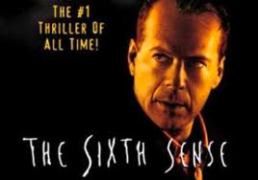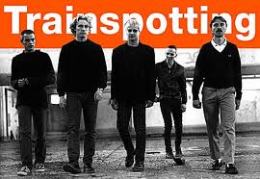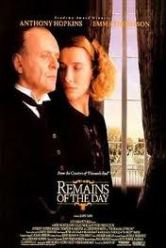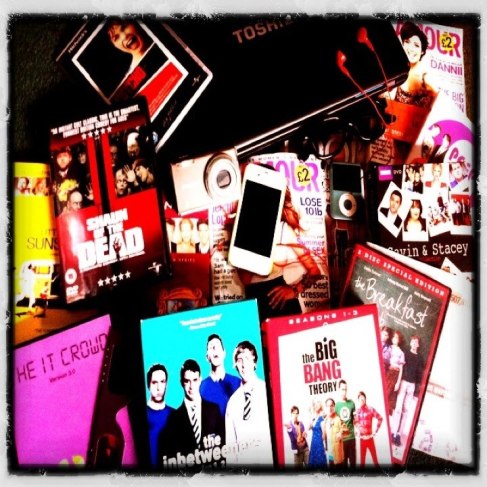‘A Tale of Two Sisters'(Under the sink)
Here are some visual examples of the shots I’ll be talking about to feast your eyes on…
Mid shot Wide shot
Close up Reaction shot
Over the shoulder shot Establishing shot Low angle shot
The scene begins with an establishing shot of the male and female in the kitchen/dining area, which immediately informs the audience of the (cold and distant) relationship between the wife and husband because of the negative body language and hostile, clipped speech. It also informs the audience that the following action will be focused on the female, firstly because she is in the centre of the frame and further attracts attention with the vivid red of her clothing, and secondly because the male leaves the frame twice, and the lingering shot after his second exit indicates to the audience that he is not coming back, highlighting the fact that she is now alone in he room.
It then cuts to a low angled mid shot depicting her head and shoulders from the edge of the table. this helps the audience to focus on her stiff and almost pained facial expression, as well as her hair over her eyes, which initially creates a barrier between her and the audience, and therefore helps to give a better insight into her emotions. Also, as a low angled shot, it suggests that she could be being watched, which helps to subconsciously build towards the imminent frightening moment.
As we hear the noise, she turns, which indicates where the noise is coming from to the viewer. It also introduces an element of fear or intrigue, as the audience can’t see what she’s looking at, or what made the noise. It then cuts to an over the shoulder shot, which depicts the blue cupboards and sink (which we now realise is the source of the mysterious noise). It then slowly tracks towards her, as well as the noise and sink, which focuses the audience on what she’s watching. During this focus, the cupboard door slowly creaks open of its own accord, and through the over the shoulder shot we see both this and her reaction to it (sharp intake of breath denoting fear). although the director could have used a series of shot-reverse-shots to show this sequence, it’s important to use the least number of shots as possible, because more shots means more opportunities to break the tension needed for the viewer to be frightened/startled at the end of the scene. It cuts to a mid shot/reaction shot, and the viewer can clearly see her fear of whatever’s making the noise, which helps builds empathy the character and the audience. This handheld shot then follows her movement, which again reduces the amount of shots and builds tension.
It cuts to a close up of the cupboard, which slightly releases the tension as it’s quite an anti climax, because the viewer was expecting something frightening to be there. The shot stays static as she walks into the frame (again building tension). We then see a reaction shot, which similarly expresses her relief. The camera follows her down (keeping audience focused on her) before cutting to a point of view shot from under the sink (ground level). This contributes to the ever increasing feeling that she’s being watched by something. The viewer also subconsciously notes that the table and chairs are empty as she bends down and obscures the background. There is then another release of tension as she visibly sighs with relief, before lifting her head. Then we see the ghost girl sitting slumped in the previously empty chair (drawing on the emptiness we had just subconsciously noted). It’s also very unsettling because the audience had just been experiencing a relative amount of relief, because there hadn’t been (so far) anything startling, plus we empathise with her previous relief.
It then cuts to a mid/reaction shot, and the camera slowly moves towards her. From her anxious facial expression, it tells the audience that she’s becoming increasingly aware that she’s not alone. She slowly moves her eyes, drawing out the anticipation/tension. When she eventually turns, it cuts a centred mid shot of the table and chairs, empty. This again releases tension, as the audience has been anticipating a re-appearance of the ghost girl. Then it cuts to a wide shot from underneath the table, which enables the viewer to see her full body position (knelt on the floor) which gives her an air of vulnerability, which also helps to increase the sense that she is being watched.
Then it cuts to another mid/reaction shot, which enables the audience to fully view her fearful expression, and register that she has realised that something’s going on. There is then a close up of a clip on the floor, which the viewer realises was not there before. There is another mid/reaction shot which shows the suspicion and concentration on her face, and then the handheld shot tracks from her eyes down her extended arm as she slowly reaches for the clip. The pace is slow as this is all one shot (applying the economy of shots rule) and tension is built up again. It also focuses the audience on the very spot which will startle them (the clip). She then touches it and starts to bring it back,and by this point the audience has anticipated that the ‘jump’ moment will come sooner, so it’s already later than originally thought. Then the horrible hand snaps out very quickly, rapidly quickening the pace of the previously slow paced scene. This lead to a very startling effect, which makes the viewer ‘jump’.
It then immediately cuts to a reaction shot of the terrorfied female screaming (audience empathise with character’s fright) before cutting to an over the shoulder shot as she stumbles backwards. The camera retreats to allow the ghost girl to come into frame, before finally cutting to a close up/reaction shot of the female as she stares in wide eyed horror.
In short, an emotional rollercoaster…













